Listen to the entire morning walk while looking at the photographs
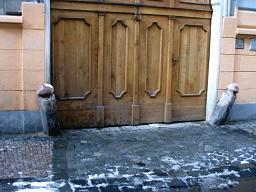
Audio Commentary
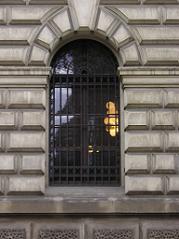 Beth Mosely
Beth MoselyENGLAND
bethiemoseley at hotmail.com
Having been asked to pick out a difference I found when comparing the Czech life style to my home culture I would say the one I noticed first was finding houses protected with bars on the windows. These bars are seem to be quite common and are attached permantly to all sides of a window without the option of releasing them. The reason I find this quite unusual is not because I think it is wrong it just the culture I have come from has a different priority when it comes to the house. The British are very conscious of house fires, at school we are given lectures about acting responsibly with fire within the house hold and how to act if a fire was to occur. On the television adverts are shown stressing the importance of placing fire guards around a live fire or not to fall asleep with a lit cigarette in your hands. We place fire alarms every where and fire blankets. Its seems to be our first priority, and house security comes second. In the Czech Republic the priority is the protection of the house and their families within it through bars on windows and locked gates. Both fire protection and the protection of ones family to be just as important I find it interesting to observe the different approaches. The reason could be due to the Czech Republics history of being invaded and the need for security in response to this and the approach has carried on after the fall of communism.

 Jochen Graf
Jochen GrafAUSTRIA
jochen at record.at
Mirrors to watch, to observe, to get ride of fear? In Prague you often see mirrors at windows, or in a modern version a video camera. Are the citizen afraid of burglars, of the police or in general of the public? I think in times of communism they were in danger of the secret police. It was a good and practical thing to watch who is at the door and they could decide if they want open the door or not. But nowadays is it necessary to watch everything, to hide at home and observe the surroundings? Maybe citizens could be afraid that they could loose their freedom. Many foreigners can attack them. Or the fear to get a totalitarian regime again. It is better to watch first and be aware what is coming instead of getting an unexpected attack from behind. To see first what is coming next and then decide to let it in or not.


Haukur Mar Helgason
ICELAND
haukurmar at gmx.de
Trees in cities are the most wonderful phenomenon - the complete reveral and symbolically the final victory of culture over nature, if we momentarily accept that dualism. Where I come from there are no trees in nature at all, only bush and weed, so the trees people plant in cities and towns there no longer symbolize the regulation of the wild as they do within continental cities, but are mere ornament. Imitation.
But back to Prague and this particular tree on the photo. Trees within cities are supposed to behave. They are supposed to look like the trees in architectural drawings, growing up, and extending to the sides only conveniently above human heads, so traffic can easily crculate under and around them. This particular tree refuses. It can be ignored - I know I walked past it quite often before I actually noticed how dissident its shape is, but once you notice what comes to mind is one or another variation of a joyous exclamation: 'What the fuck!'
I guess the tree will be removed before it becomes a real trouble-maker, car traffic will not stop for an individual tree no matter how vigorous its revolutionary spirit. It will be stopped, but others will keep coming. And demand the space of life, the tension-space between organization and chaos.

 Jochen Graf
Jochen GrafAUSTRIA
jochen at record.at
Mythos im Kontext zu unserem Alltag.
Wir haben, durch die verschiedenen Kulturen der Erde und durch die Vernetzung der Welt, in letzter Zeit die Neugier auf den Alltag der anderen Kulturen in uns verstärkt. Wir wollen verstehen wie und warum sie das Leben, das sie haben, leben, und warum kein anderes. Die Verzweiflung am (rasenden) Stillstand des eigenen Alltags treibt unsere Neugier am Alltag der anderen an.
Doch es stellt sich dabei eine grundlegende Frage: Wer hat Zugang zum Alltag?
Der Alltag generiert unsere Gesellschaft aus der Perspektive des Teilnehmers rein subjektiv und nicht objektiv. Dies führt wiederum -auch als Symptom- zur Kritik am Eigenen und als Ausdruck der Sehnsucht nach dem fremden Anderen.
Die Forscher der Medien und somit auch unseres Alltags bekommen Anweisungen objektiv zu bleiben. Dies bewahrt sie sich mit der Materie wirklich einzulassen, aber es ist zugleich eine Selbstlegitimation als Wissenschaftler, nämlich im Mythos der Objektivität gegeben. Das Forschungsinteresse beschäftigt sich traditionell mit den unteren Schichten, benachteiligten Gruppen und den gesellschaftlichen Außenseitern. Diese Forschungen haben aber oftmals den Anschein politisch zu sein. Es ist immer eine Frage wie viel vom eigenen Wissen den anderen zugänglich gemacht wird. Es wird verschwiegen und daraus entsteht eine Art Mythos. Es ist weiter auch eine Frage der Art und Weise politischen Agierens in einer geteilten Gesellschaft: Man ent-scheidet sich, indem man handelt. Aber welchen Entscheidungsspielraum hat man? Was wird einem vorgegeben? Dabei muss man aber den Anderen einen Entscheidungsspielraum einräumen, indem man den Anderen und sich subjektiviert. Dabei geht aber die Komplette Objektivität verloren.
The following photographs are not part of the morning walk, but were taken throughout Prague and commented on in writing by the photographers.
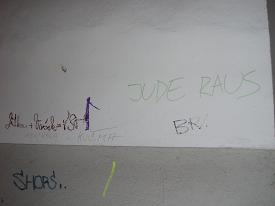
 Jens Rossen
Jens RossenDenmark
jens-rossen at sol.dk
"I have been here in Prag for now about 8 month and I have seen sighs like “Jews Out” and sighs of the swastika.
With frightened me quiet a lot because in this country with so many different kind of nationality, Vietnamese, Polish, Ukrainians, German, Russian, Scandinavian just to menacing a few. I was of that believe that there would be a bigger understanding and respect for each other, but under the surface the is still a hidden racism against different kinds of nationalities with is shown in this case in a anti-Semitic way special against the Jewish community here in Prag. I thought that a country like the Czech Republic that has been through so much of this kind in the last 100 years would take a great stand from these kinds of statements.
But nobody does anything to erase this kind of wall statements on public buildings.
Where I come from, Denmark, we have a very small anti-Semitic orientate group of people that comes have there rallies and marches every year, with in opinion should not be allowed but we have the human right with does not allow you to hinder this marches and rallies.
But the difference between Denmark and The Czech Republic is that the Danish people has not been through the same amount of oppression as the Czech has and have there by not the same view on nazism, fascism and communism as the Czech people have. After the 2nd World War Denmark was free and haven’t had been under oppression by a other country ever since so we cant have the same feeling towards Nazism and fascism as a Czech person have.
So my point being I came to Prag with that state of mind that there wound not is any kind of racism here because of the country’s long history of oppression, especially because of the history of the Jewish of the community in Prag. But there will always be some kind of racism taking place in this world so it is our job that it does not become out of control.

 Yeo Myoung Cha
Yeo Myoung ChaKOREA
dawna at datakal.cz
It’s probably the very first thing I noticed when I came to Prague one year ago.
Of course there are lots of buildings in Prague without any color on them (especially buildings which were built during communist era), but on the other hand there are lots of them painted in very bright, vivid colors, which I haven’t seen in Korea, the country where I come from, for example pink, orange, green etc.
It Korea, most of buildings, apartment buildings and houses are painted in pale pastel colors, for example beige or Ivory and in the most extreme case, pastel green unless they are not built with bricks, or in lots of cases, there are not painted at all.
Here in Prague, each building seems to try to compete with each other to stand up and ask people for paying attention to each of them.
In the beginning, those bright colored buildings almost made me feel dizzy and made me feel like I was in amusement park or so, but now I think I start enjoying them and appreciating the diversity of different tastes and colors-and maybe that’s the reason that I start disliking those gray buildings in outskirt of Prague now much more than before. Probably it’s because that those gray buildings are so much lack of characters?

 Vuk Begović
Vuk BegovićMONTENEGRO
vuk at cg.yu
What I found kind of interesting is the funny way that some churches are 'presented' to us, not only in Prague, but in many other bigger (modern?) cities. Although I'm not religious person, I find churches, monasteries etc. as a 'sacred' place, not in a religious way, but more in a historical or spiritual way. That's why I feel that such places should be, at least a little bit, isolated from the surrounding areas. But, as we can see on the photo, 'sacred' area is penetrated by many (really) funny things. Cukarna is there, concrete in bad condition, surrounding buildings - and the crucified Jesus in company of a crucified traffic sign. Welcome to the urban civilizations.

 Nicole Wines
Nicole WinesUSA
nicole at albuscav.us
I took this photo because I have been and continue to be fascinated by the use of red clay roofing tiles in Europe. I have never seen a red roof in America and never saw one until I came here a few years ago. I know that it is ecologically more sound than many materials (like the black tar roofs in America) mostly because they do not absorb too much heat in the summer. I have noticed though, especially in cities, that this type of roofing is used less and less, many newer buildings have black tar roofs and sometimes homes in smaller towns and the country have tin and other metallic materials on their roofs. Not only is it more ecological than many other roofing materials, but also more aesthetically pleasing, which is another reason why it fascinates me.

 Agnieszka Ćwieląg
Agnieszka ĆwielągPOLAND
agawe at o2.pl
1. “Garbage”
Prague is considered a “pearl” of Central- Eastern Europe, unrepeatable in terms of its cultural and architectural beauty. Even though its uniqueness might be true, its every day life, social phenomena and still visible historical remains are similar to what I observe in my, neighboring country, Poland. What I would like to mention here is something my everyday perception is full of, namely, “contrasts”, or to go further- “absurd phenomena”.
The attempts to eliminate „the grayness“ of communism from Prague’s scenery are spectacular and impressive. Colorful, renewed buildings; colorful tourists surrounding them. Overall, we can say the attempts are successful. It is enough, however, to go into a bit more hidden corner, still in the very center, to let the reality reveal itself.
Just across the street from monumental and impressive building of The National Theater there is a subway with a murky and gloomy atmosphere. It could be a very usual thing, but what I found very compelling there is a special kind of exhibition. Behind well-padlocked railings an upturned garbage bin is exposing its guts. The guts of modern consumption.
Nobody is able to change the exhibition...maybe just by accidentally adding new exponents it could slightly be changed. It probably doesn’t have too many visitors either…So, what is the value of this kind of exhibition? It is only a relic from the past history where absurd was the predominant issue?
 2. “Window with a railings”
There are many similarities between the things I observe “at home” and here, in Czech Republic: language, social situation, people’s behavior and to a certain extent - mentality.
2. “Window with a railings”
There are many similarities between the things I observe “at home” and here, in Czech Republic: language, social situation, people’s behavior and to a certain extent - mentality. Although many questions arise, there is one that appears more frequently. Do Czech people have special need to close themselves in their inner worlds? To mark their own territory, to emphasize their ownership?
Windows with special “gate” railings, closed courtyards, blocks of flats with a grated entrance where you cannot get in and even out without the special key permission?
Is it the reaction to the received freedom after 1989? Paradoxically under the totalitarian time everything belonged to the community, was open and shared. Democracy induces people to close themselves and not to share their possessions anymore.
I know that “the closing” process emerges in my country as well. Although I haven’t noticed this phenomenon in Poland with this intensity yet.
Is it a necessary prerequisite in the process of joining the European Community?
 Miriam Faßbender
Miriam FaßbenderGERMANY
mirfa02 at hotmail.com
Generally I want to mention that I didn´t realize any specific problems in Prag. I guess there are neither less nor more problems than in any other major European city.
That’s why my pictures are not only concerning problems, but rather things I would love to see in another way, or which would make me happier if they would develop into another directions. The first three seriously, the last one is unimportant.
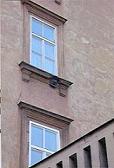 1. One of the first things that surprised me when I walked along the route was the brutality with which the owner of houses allow to renovate incredible beautiful old houses with disgusting new (modern cheap and cold-blocking ‘plastic‘) windows. New windows in old houses are mot the only examples for the missing taste(s) of owners. There are also modern chimneys, beer- and other ad-signs, which distract our curious gaze on typical old Czech buildings.
1. One of the first things that surprised me when I walked along the route was the brutality with which the owner of houses allow to renovate incredible beautiful old houses with disgusting new (modern cheap and cold-blocking ‘plastic‘) windows. New windows in old houses are mot the only examples for the missing taste(s) of owners. There are also modern chimneys, beer- and other ad-signs, which distract our curious gaze on typical old Czech buildings.I only want to add, that I don’t think this is a typical Czech problem, I guess this way of not-thinking, disinterest or consumer-greediness and globalization (ads) exists everywhere.
This image is only one of the examples.
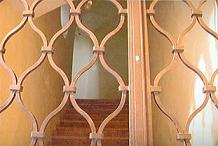
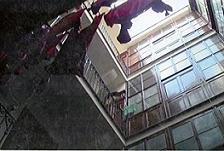 2. Houses / backyards etc. are locked, when we could have such beautiful impressions / views like this in some of the courtyards, which even reminds me on balconies in cities in warmer latitudes (areas).
2. Houses / backyards etc. are locked, when we could have such beautiful impressions / views like this in some of the courtyards, which even reminds me on balconies in cities in warmer latitudes (areas).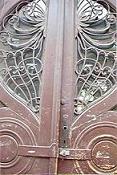 Why is every door locked?
Why is every door locked? Beautiful doors to exciting looking buildings and courtyards are always locked!
Also why are beautiful places hiding ‘themselves‘ during their closing times? Wouldn’t a lot of people come back another day when they would see how cozy and inviting some places (interior) look like?!
How often did I try to open doors at different places in Prague on several buildings, because I was so curious what I might discover behind? Or where the door is leading to!?
Even church doors are always locked!?
Not to talk about the endless process of opening and locking several doors before entering / leaving houses. People who have to run downstairs at nights and in early mornings to open doors for friends?
Why does everything has to be locked?
 3.
...no interest for the world?....
3.
...no interest for the world?....Why does Prague have such a little amount of letterboxes? Or why are they so easy to ignore / overlook?
I always carry my letters and cards at least 5 days before I find a letterbox and realize in the same moment that I still haven’t sent my letter, card...
Are letterboxes only existing at post offices? (no I am kidding, but there are really only a few!).
4. What I realized from the first day on, since I arrived Prague: people have problems to see / look in other peoples eyes. I have the feeling that most of them are avoiding any kind of eyekontakt, and are getting really nervous when you notice them (with interest). Not to talk about their indomitable way of expression / body language when you carry a photo camera.
Often I wish they would sometimes look (at me) and show more interest of what’s happening around them!
Not that everyone is like this, cause there are exceptions, but Slovak people for example seem to me sometimes more open-minded on the first sight/gaze
5. Why are, not only shop-windows are always full of ads and commercial posters ect., but also windows of kavarnas are often overcrowded and covered with a mess of different posters?
Wouldn´t everyone prefer to have at least the chance to look inside (and maybe to enter than, afterwards) and the opposite way to see what’s going on outside (not only to see the backside of ads ect.)?
I at least would!!!! (prefer to use windows for what they are made-to look through, to observe the actions and movements on the streets, in bars and restaurants, shops...
A large group of students from The School of The Art Institute of Chicago choose, at their last visit in Prague, as their common theme Wenceslas Square. By chance - and what is chance, in fact? - they met two students of Bohuslav Blazek from his Seminar of Media Criticism, at Film Faculty, Academy of Performing Arts. They were invited to install their works for this seminar together with their new friends from Chicago, in a gallery led by arch. Doubner, located in Wenceslas Square. Czech and American paedogugues have met at this occasion and have decided to collaborate. Here is the first fruit, a photography of a strange phenomenon in Prague, commented by the authors from their American point of view.
 Hague Williams
Hague WilliamsUSA
artrage at yahoo.com
Merry-Beth Noble
USA
mbnoble at uchicago.edu
Christmas Carp
We were fascinated by the crowded tubs full of large live grey carp around the city streets of Prague during Christmas time. What do carp have to do with Christmas? Where do they come from? What are they for-- to keep as pets, or to eat? We learned quickly that they were a Czech tradition as a holiday food. The chosen carp is killed in front of the customer by a blow to the head with a hammer. The tradition arose because the early Czech peasants had no choice but to eat carp while wealthy monarchy ate venison (deer meat) for Christmas. Could the bashing of the carp's head be an indirect demonstration of frustration towards the powerful ruling class?
In the U.S., carp are rarely eaten, and are usually seen swimming in Japanese-style koi ponds with decorative large goldfish. With American holiday meals of turkey, mashed potatoes and stuffing, fish does not come to our minds as a Christmas tradition,... or a Christmas myth.
The myths of Christmas, over time, transform into traditions that are unique to each culture. It is when one enters a new culture from the outside, that traditions can appear strange, and myths are difficult to understand. Bludgeoning live carp or chopping down a Christmas tree can be considered brutal or acceptable depending on one's perspective.